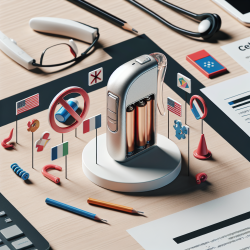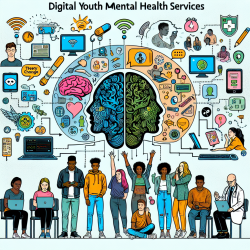In the realm of audiology and special education, the safety of our clients, especially the children, is paramount. A concerning issue that has persisted over the years is the ingestion of hearing aid batteries by children. The research article, "Peer Commentary on 'Child-Proofing of Hearing Aids to Prevent Hazards Posed by Battery Swallowing'" by Dennis Roy, sheds light on this significant issue and proposes thought-provoking solutions. As practitioners, understanding the implications of this research and how it can be applied to our practice is crucial for enhancing the safety and well-being of our clients.
Every year, almost 300 cases of button battery ingestion are reported in North America alone. However, this number only represents a fraction of the actual incidents, as many go unreported. While hearing aids are essential for many children, they also pose a risk when the batteries are easily accessible. Floyd Rudmin, in his commentary on Roy's article, argues that the focus should not solely be on modifying hearing aids but rather on addressing the broader issue of making all button batteries safer.
Rudmin suggests coating the surface of all button batteries with a non-toxic but awful-tasting substance to prevent ingestion. This solution, although simple, could be revolutionary in preventing the numerous cases of battery ingestion that occur each year. As practitioners, we can advocate for such measures and work towards a safer environment for our clients.
Furthermore, Rudmin emphasizes the importance of consumer awareness regarding the dangers posed by batteries. As specialists in online therapy services, we have a platform to educate and inform parents, caregivers, and the wider community about these risks and how to mitigate them. Here are some strategies we can implement based on the outcomes of the research:
- Advocacy: We can lobby for changes in industry standards to make batteries safer. This includes advocating for the coating of batteries with a non-toxic substance that would deter ingestion.
- Education: Providing educational resources to parents and caregivers about the risks associated with battery ingestion and how to prevent it. This could be through online workshops, informational pamphlets, or through our therapy sessions.
- Innovation: Encouraging the development of child-proof hearing aids and battery compartments. While some manufacturers have made strides in this area, there is still room for improvement.
- Collaboration: Working with manufacturers, consumer groups, and health professionals to research and implement solutions that can make batteries and hearing aids safer for children.
By implementing these strategies, we can make a significant impact on the safety of children who use hearing aids. It's not just about preventing accidents; it's about creating a safer and more inclusive environment for all our clients.
In conclusion, the research presented by Dennis Roy and the commentary by Floyd Rudmin provide valuable insights into a pressing issue. As practitioners in the field of special education and online therapy services, we have a responsibility to take these insights and translate them into action. By advocating for safer battery practices, educating our clients and their families, and pushing for innovation in hearing aid design, we can contribute to a safer world for children with hearing impairments.
To read the original research paper, please follow this link: Peer Commentary on "Child-Proofing of Hearing Aids to Prevent Hazards Posed by Battery Swallowing" by Dennis Roy.










